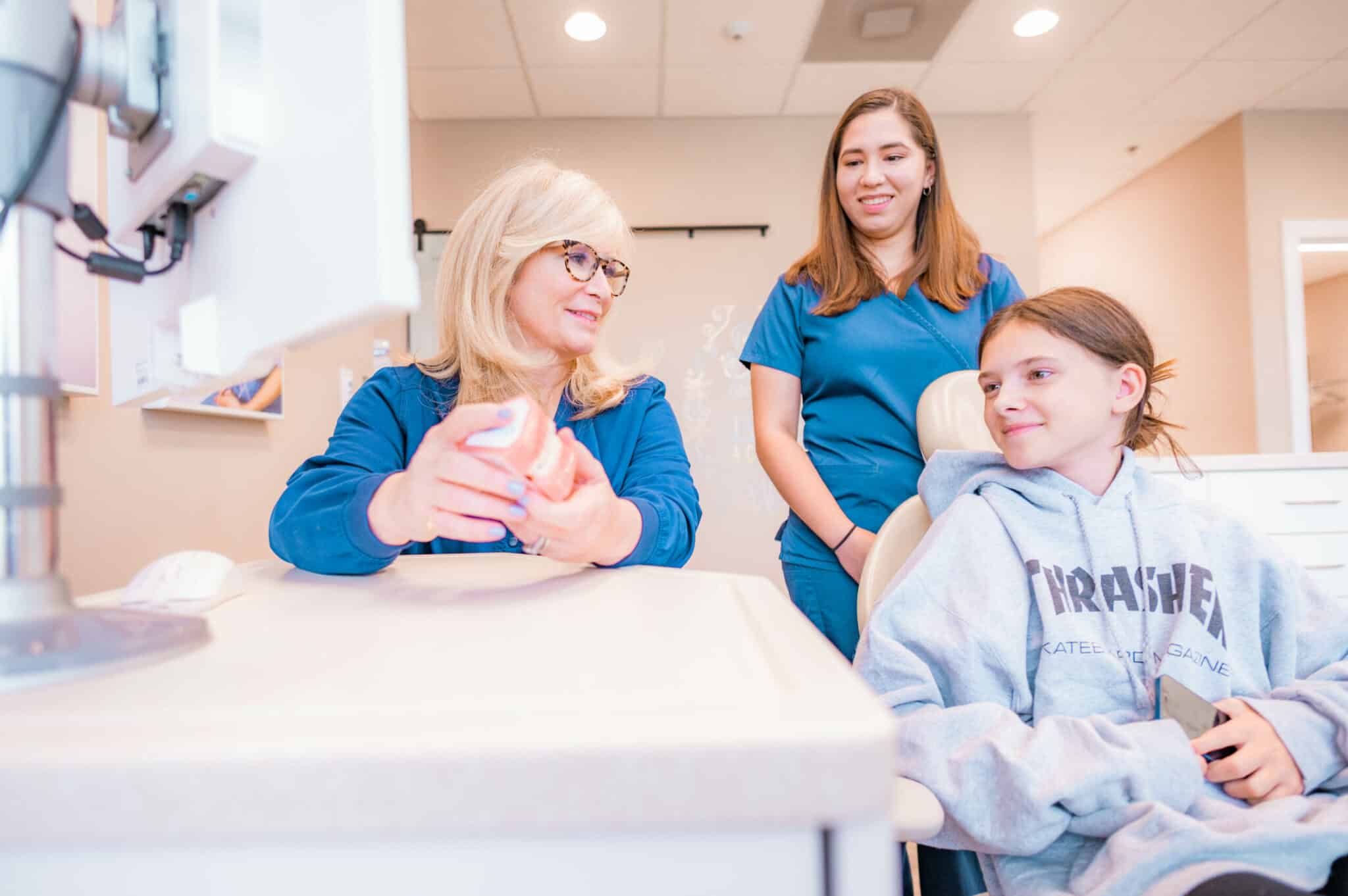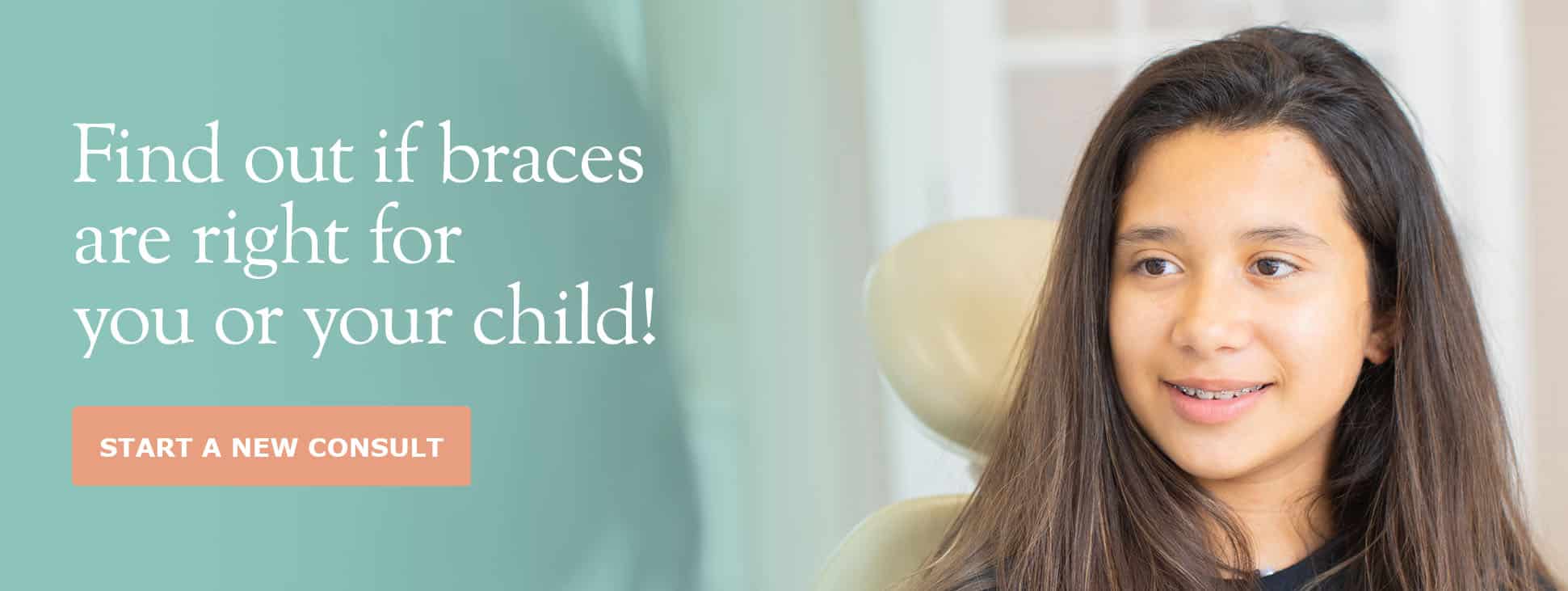Braces are the tried-and-true method for repairing dental issues, from overbites to underbites to gapped teeth. The use of braces dates all the way back to ancient Egypt! Today’s braces are obviously far more sophisticated than a few golden wires strapped to the teeth. Modern technology has created braces treatment plans with more precision and efficiency than ever. Even the braces have evolved to be smaller, more efficient, and more comfortable than what your parents may have worn. But how exactly do braces work?
At Smiles by the Bay, our patients are curious to know how all these metal brackets, wires, and elastic bands will lead to a beautiful smile full of straight teeth. It’s an interesting process that includes some pretty incredible things our bodies can do. Combine that with technology and great braces, and you’ve got the recipe for the smile of your dreams!
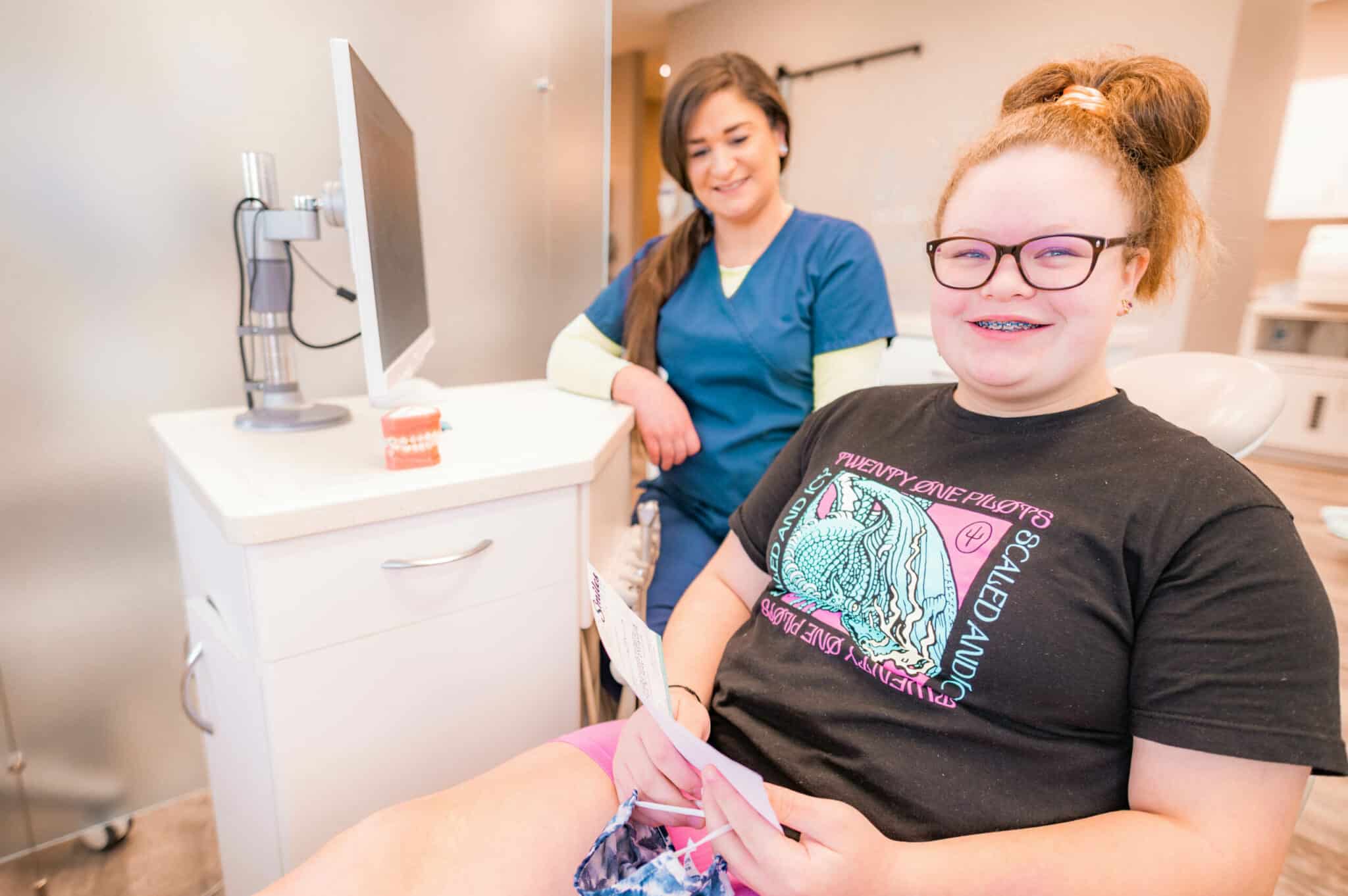
What Are the Parts of Braces?
At Smiles by the Bay, we offer two types of braces: Self-ligating braces and traditional metal braces in gold. Both types of braces use brackets and archwires as the main components of the braces. Gold braces are more like traditional braces in that they hold the archwire to the gold brackets with elastic bands. Self-ligating braces use tiny doors on the brackets to hold the archwire in place, so no elastic bands are needed. Let’s take a closer look at the different parts of braces and self-ligating braces.
Brackets
These are the tiny metal or ceramic pieces that attach to the tooth. Unlike brackets on traditional braces, self-ligating braces brackets have tiny doors on the front that close over the archwire. This differs from traditional braces that use elastic o-rings to hold the archwire to the bracket. Those elastics stain and wear out over time, which means they must be changed frequently in our office. Without the elastics, self-ligating braces require fewer office visits.
Archwire
This wire stretches across the teeth through the brackets. The archwire pushes or pulls the teeth into place. With traditional braces, the archwire is held in place by o-ring elastics. Self-ligating braces use a small door to hold the wire in place, but the door allows the archwire to move more freely. It allows us to control the pressure applied to your teeth with more precision and comfort.
Elastics (Gold Braces Only)
O-ring elastics are only used on our gold braces because they are more like traditional metal braces without the doors to hold the archwires. These elastics hold the archwire against the brackets, but they must be changed frequently because the rubber wears out after about six weeks.
In addition to these three main components, self-ligating and gold braces have other parts that are used to help move your teeth.
Powerchains
Powerchains are elastics that are connected together to speed up movement or work harder to move teeth that may need a bit more of a push to straighten properly. They are mainly used to close gaps between your teeth, particularly larger gaps that may take longer with just braces.
Hooks
These are tiny posts found on some brackets that hold rubber bands. These rubber bands can be stretched from the upper to the lower jaw to repair crossbites or realign the jaws. The hooks usually are found on side or back brackets instead of the front ones, so you probably won’t notice them until we use them.
Coil Springs
These can be used to spread two teeth apart to allow more space so the teeth between them can be straightened. They can also be used to close gaps between teeth. There are three types of coil springs: Open, Closed, and Passive. Open springs spread the teeth out. Closed coil springs eliminate teeth gaps. Passive springs keep straight teeth in place while the others are moved around them.
Rubber Bands
These are different from the o-rings used around brackets with gold braces. Rubber bands are larger and are put over the hooks by the patient to realign the jaws or repair crossbites. The patient removes the rubber bands to eat or brush and floss their teeth, then puts new rubber bands in their place.
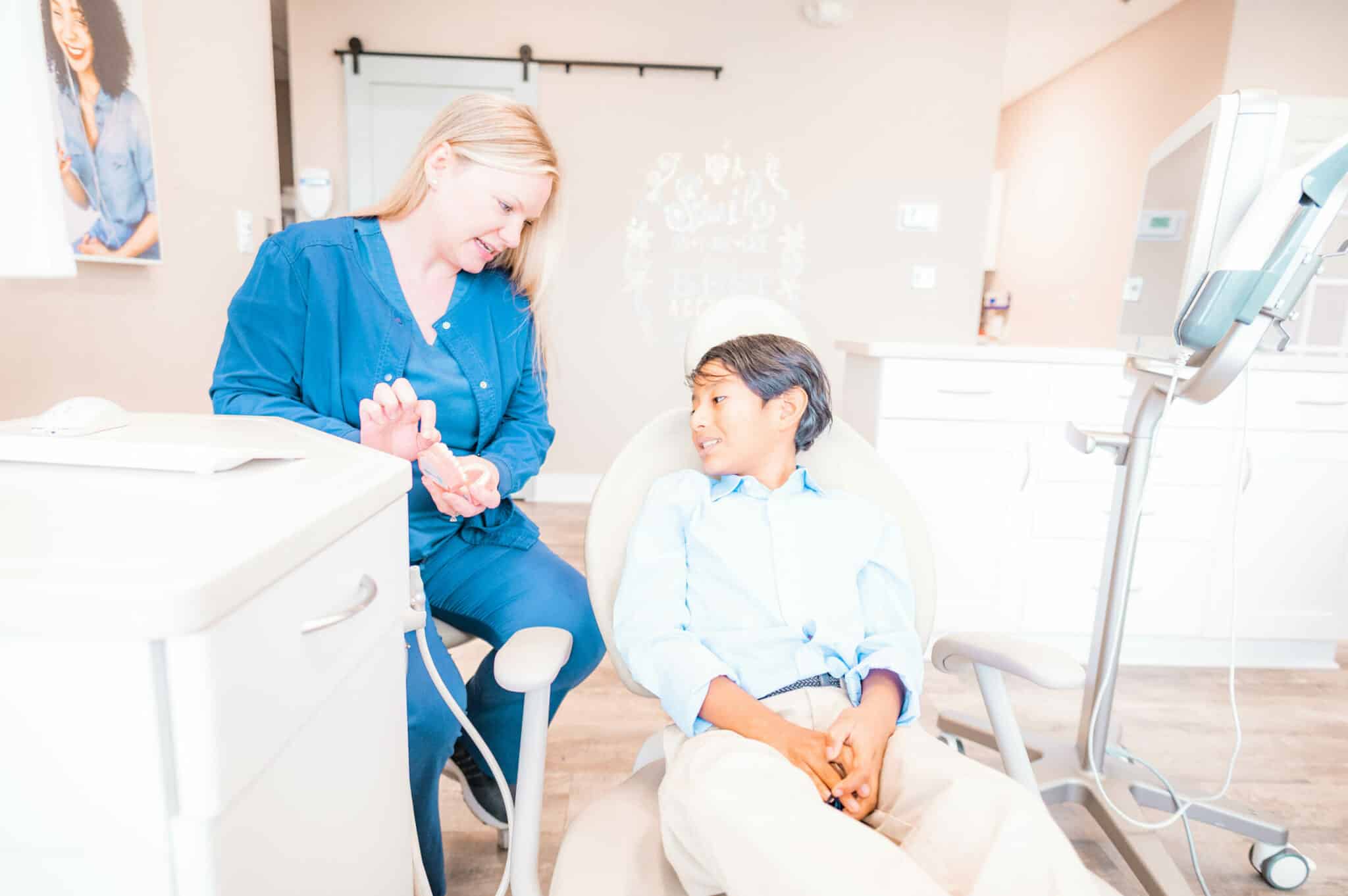
What Do Braces Do To Your Teeth?
So what do braces do to move your teeth? How do brackets work? How do archwires work? It seems like a complicated process, and it is, but it’s one we plot out carefully and precisely to give you the best treatment possible. The process does require help on your part to maintain great oral hygiene, wear your rubber bands, keep up with your appointments, and keep from damaging your braces by avoiding certain foods. The rest is up to us. Our team effort will create a smile you’ll be proud to show off!
So how do braces move your teeth? The brackets are set on the point of your tooth where pressure can move them the most. The archwire runs between the brackets and exerts that pressure. As the pressure is applied, the jawbone around the tooth’s root breaks down, allowing the root to shift. As the root moves into its new position, new bone fills in behind it to hold it in place.
Generally, we have three steps we take to fix your teeth with braces.
- Straightening your teeth: We usually begin by straightening the teeth, so they line up correctly side by side. Once the teeth are straight, we have a better view of your bite issues — such as an overbite, underbite, or crossbite — and can begin repairing those.
- Fixing your bite: The next step is to repair your bite issues. If you have an overbite, we use your braces and rubber bands to move the upper teeth back to fit better against the lower teeth. We do the opposite for an underbite. For crossbites, where the back teeth don’t line up properly, we use braces and rubber bands to move them into their proper places.
Final changes: Once the bite is repaired, we may have a couple of teeth that aren’t as straight as they were. The last phase of braces treatment is to make sure everything is where it should be and perfectly straight. Once this last step is complete, so is your braces treatment!
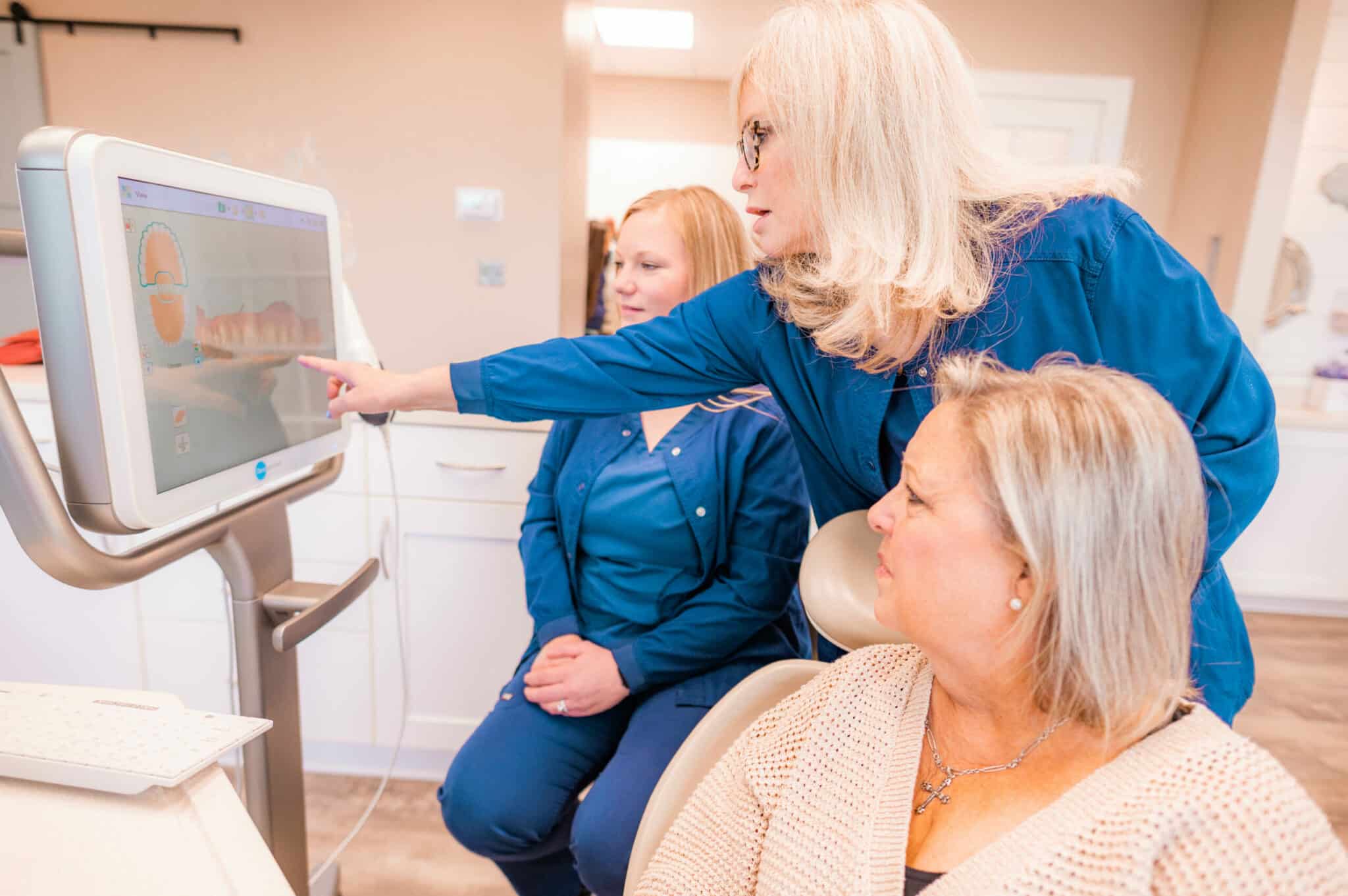
How Do I Get Braces in Annapolis, MD?
Smiles by the Bay offers braces treatment to patients in the Annapolis, MD, Kent Island, MD, and Denton, MD, areas. Now that you know how braces work, are you ready to get the smile you’ve always wanted? You can start with a consultation at Smiles by the Bay. We work with both adult patients and children to create exceptional smiles that can last a lifetime. Contact us to see how braces can work for you!





